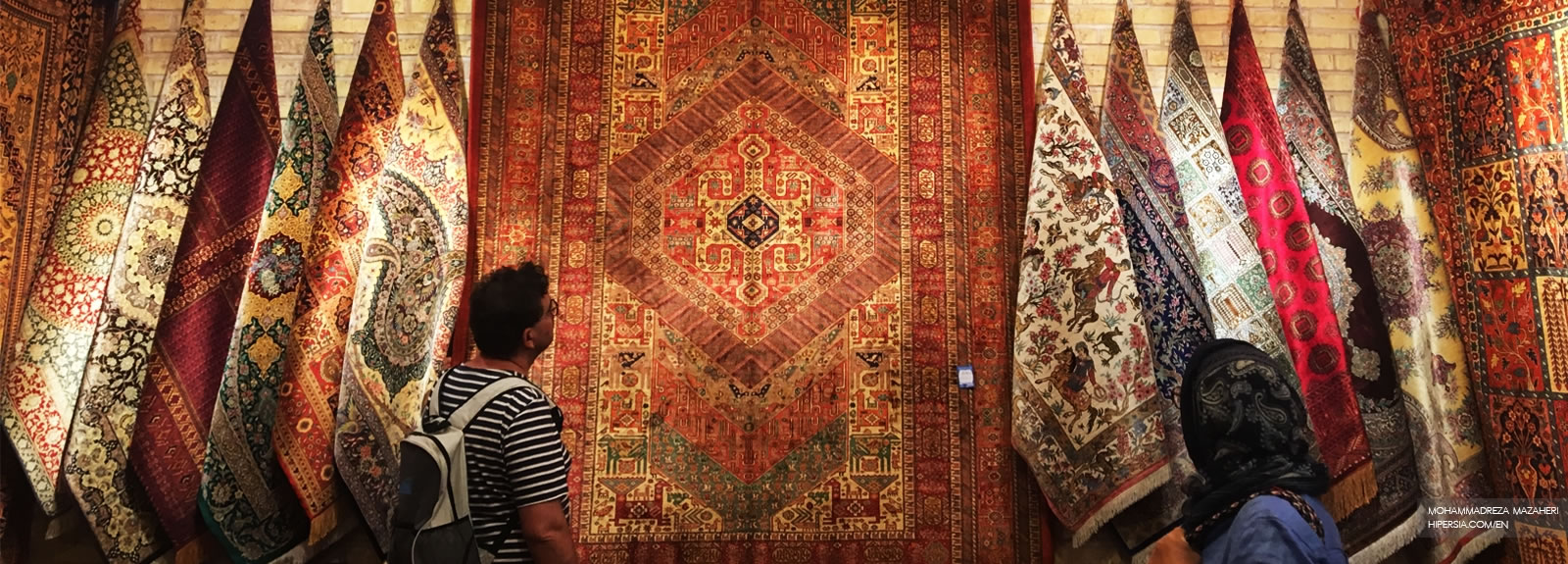



Every nation has a commodity that the world recognizes them by their symbolic commodities. The Persian hand-knotted carpet is the symbolic commodities of Iran.
Carpet-weaving is undoubtedly one of the most distinguished manifestations of Iranian culture and art. The carpet experts around the world say that the Persian carpets are the best and most exquisite carpets in the world. Archaeologists and experts believe that the history of textiles and carpet production in Iran dates back to the Safavid period (1501-1736 AD) and the 16th and 17th centuries have been the beginning of the flourishing of Carpet-weaving art in Iran.
From the time that the human recognized the importance of the basic necessities, the idea of producing a textile to protect them from the cold and the hardness of the earth has emerged. So, by learning the knitting and weaving techniques, the hand-knotted carpets and rugs were invented. About a third of the world's handmade carpets are woven in Iran, and Iran has 30% of the handmade carpet market in the world.

The Persian carpets depending on the type of weaving and design, are classified into three different categories as follows:
Other categories of Persian carpets are Nomadic-made carpets. The most of the Nomadic-made carpets are produced by women weavers who they start weaving from the age of fourteen. The design of this kind of Persian carpets comes from the imagination of weaver and haven’t any specific patterns. It is interesting to know that, behind each of these carpets, a beautiful story is hidden in the warp and weft of the carpet. The most of these carpets are woven in runner size because of the nomadic lifestyle which they live in the tents.
The Village-made carpets have a higher quality rather than Nomadic-made carpets. This category of Persian carpets, have standard size like City-made carpets and weave in different percentage of silk yarn. The patterns of Village-made carpets are much the same as the Nomadic-made carpets. Some of these carpets are purely woven from silk, but in the comparison to Qom carpets have a lower price because they are produced without any signatures.
The city-made carpets have the highest quality because the weavers use a fixed vertical loom that allows them to weave a higher knot density carpet. The carpet enthusiasts can find a wider range of colors and intricate designs in the city-made carpets. Furthermore, the city-made carpets are woven in different percentage of silk and wool. The important part of every city-made carpets is their signatures that are woven into one of the ends of the carpet. The signatures include the city name and producer name. It is interesting to know that, every Persian carpet have both light and dark sides simultaneously, and this difference can be seen when you move from one side to the other side of the carpet.
Examples of city weavings include Kashan, Isfahan, Qom, Tabriz, and Nain.
Tabriz carpet:
Tabriz carpets have a diverse variety of patterns and bright vibrant colors. These world-famous carpets are made from a wool or wool/silk piles and a cotton or silk warp. The patterns include Floral and Geometric (Heriz) design.
Qom carpet:
Qom is located between Tehran and Isfahan that the carpet weavers produce exquisite and precious carpets with a hundred percent silk. Some of this purely silk carpets have a higher price due to using a high-grade silk that provides from the Caspian Sea (The northern areas of Iran).
Pay attention to the carpet size and shape is the first step in choosing a carpet. A right fit carpet helps you to uplift the appearance of your space. So, measuring the available space prevents you from a carpet that’s too large or too small for the space.
Persian carpets have top and impressive quality, and this quality is directly related to the high value of these carpets. The factors that determine the quality of the carpet are summarized in the density of the knots, the wool quality and the colors that used in it.
The density of carpet knots is the number of knots in one square inch of carpet, which is one of the main elements of measuring the quality of carpets. In general, the density of knots in Persian carpets ranges from 30 to 300 knots per square inch. The 30-knot carpets, are thicker and less expensive and have a low quality, whereas the 300-knot carpets are very thin and high in quality.
Note: Don’t Obsess Over the Knot Count. Because these numbers come from the average amount of knots that be counted in different parts of the carpet.
Check the carpet closely from all angels and inspect the conditions of the carpet such as the symmetry of the patterns and colors and size of the carpet. A few centimeters difference in the dimensions of a hand-made carpet in the upper and lower parts is acceptable and can be ignored, but more so, especially in small rugs, is the fault of the carpet.






“Oh! Squander not this breath that Heaven hath lent thee, Nor make too sure another breath to borrow!’” Khayam